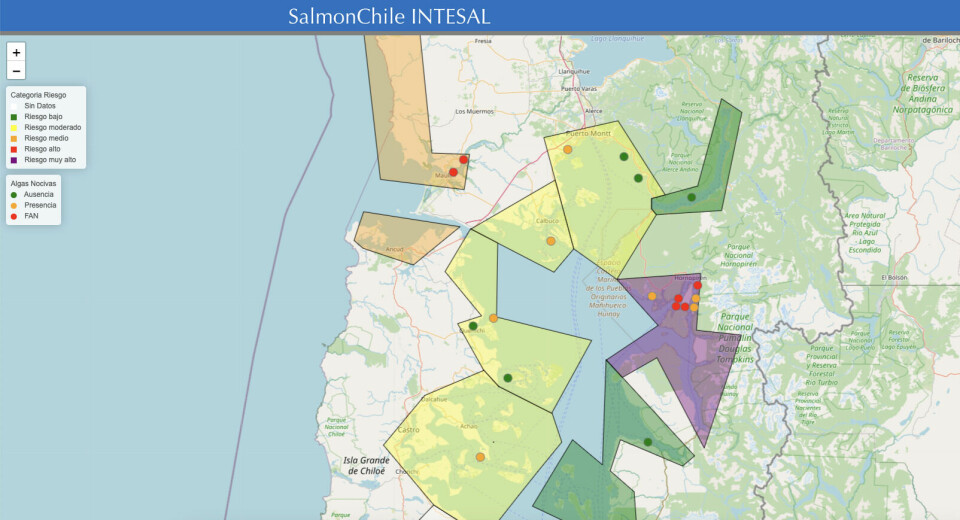
Chilean farmers respond to threat from algal blooms
Rain followed by sun provide perfect conditions for H. akawashido
Salmon farmers in Los Lagos region in Chile have activated contingency plans and evidenced changes in the behaviour of the fish due to increasing concentrations of the harmful microalgae Heterosigma akashiwo.
The algae increase is in the area of Hornopirén, Isla Pelada and Cholgo channel. It was at this same time of year, and in a very nearby area, Comau Fjord, where a well-known bloom of H. akawashido was recorded in 2021.
Salmon industry technical and science institute Intesal's harmful algal bloom (HAB, or FAN in Spanish) risk map reports that samples collected at the beginning of last week had concentrations of the microalgae between 48-474 cells/ml.
Brackish water
Fabiola Villanueva, executive director of @FAN spa., told Fish Farming Expert’s Chilean sister site, Salmonexpert.cl, that the specific conditions have been met for the bloom of this particular microalgae to occur, since the diversity of phytoplankton has been low in most of the farm centres in the three growing regions.
“This post-rain condition is quite suitable for microalgae, such as Heterosigma, in addition to the amount of nutrients that reach these bodies of water through currents. This microalgae is more of brackish water, so if we have rain that carries nutrients through currents, more solar radiation, the microconditions it occupies are given to be able to grow,” explained Villanueva.
Large areas
In the current bloom, the microalgae has been moving between Isla Pelada and Cholgo Channel depending on the currents and tides. According to the @FAN spa expert, the blooms of H. akawashido cover large areas of sea, as did the historic HAB blooms of 1988 and 2021 in the same area.
So far, according to the information Villanueva manages, no massive mortalities have been recorded. There is also a flowering of Karenia spp. in the Maullin area, but without causing harmful effects on the fish yet.
Around 6,000 tonnes of salmon were killed in Chile as a result of algal blooms in early 2021 (summer in Chile), including more than 2,000 tonnes in the Comau Fjord.























































